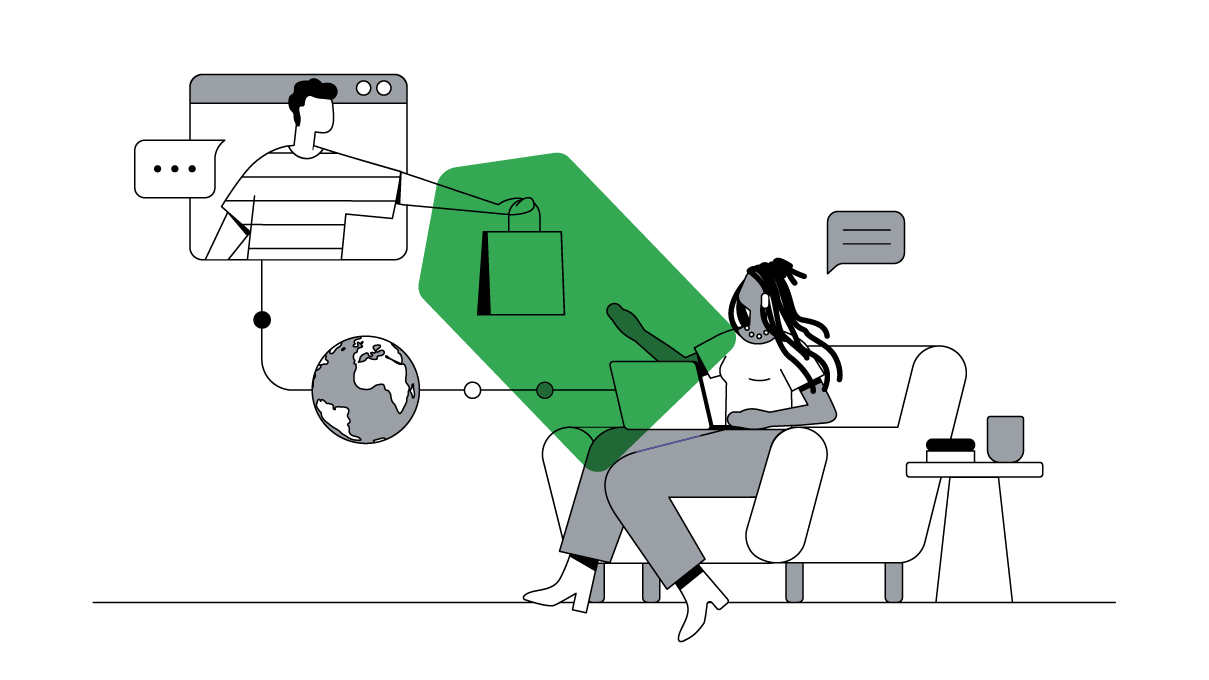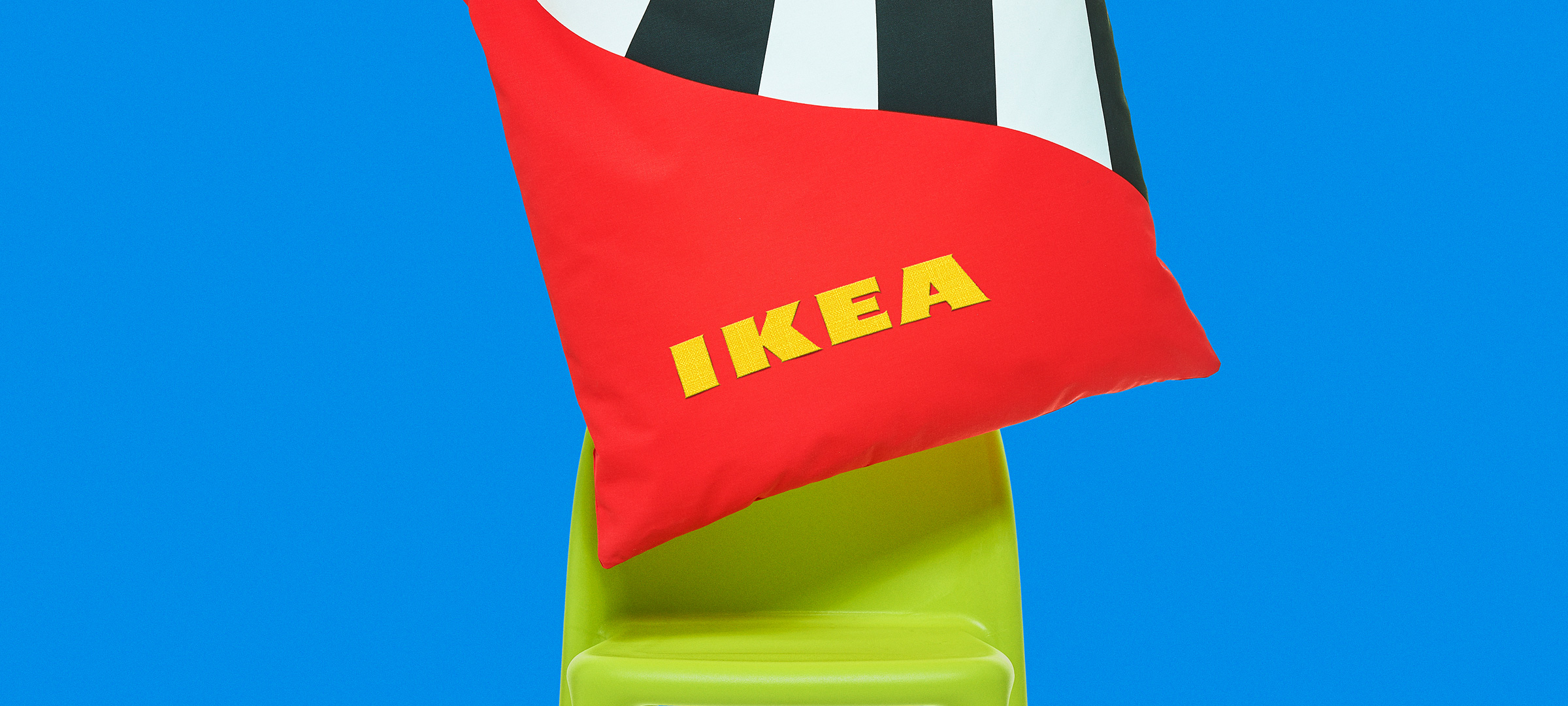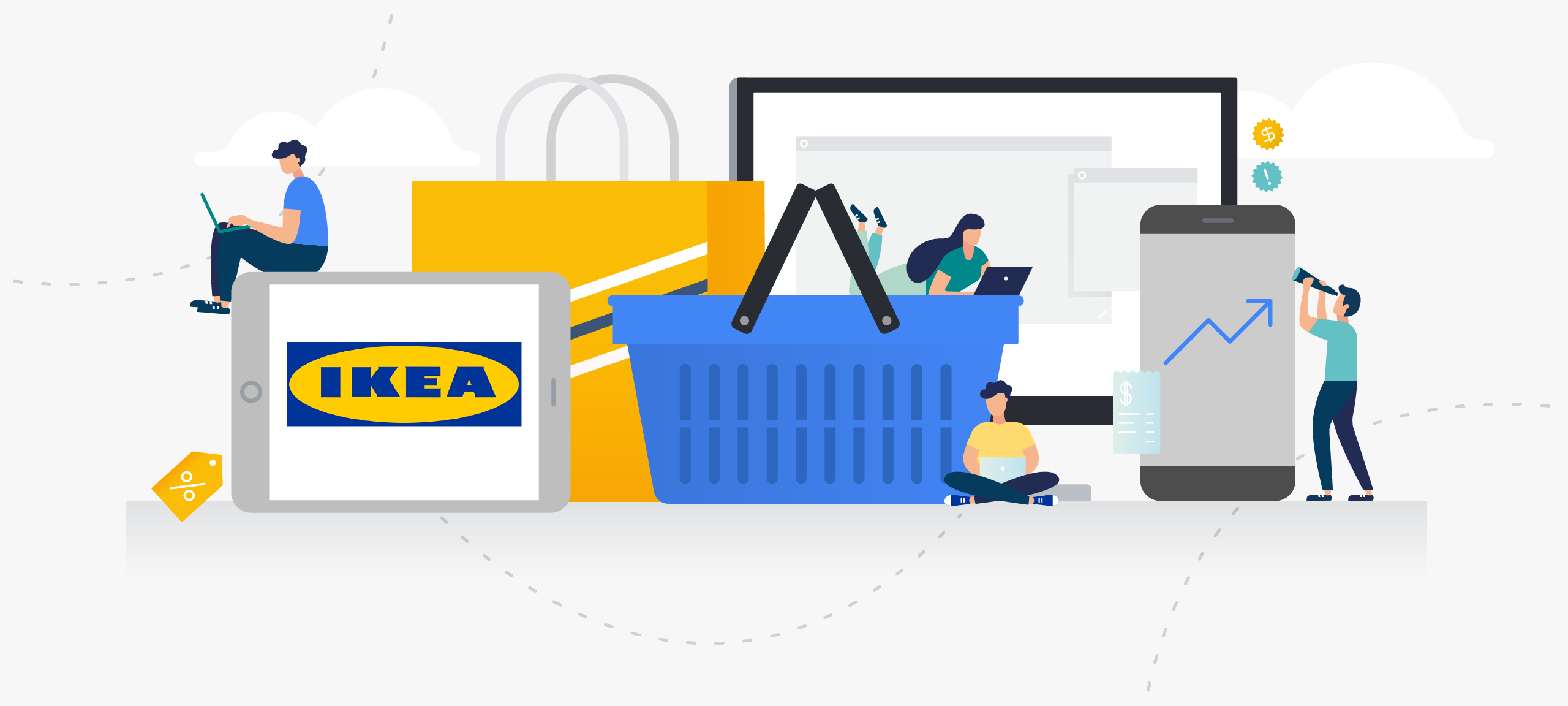A homegrown hero, IKEA needs no introduction. From their Swedish beginnings in 1943 they’ve become a global leader, now operating across 62 countries.1 But each market has its own unique challenges, particularly when it comes to something as complex as omnichannel.
In Google and Pattern’s recent Better Omnichannel Customer Experience (BOX) research, IKEA performed exceptionally well, landing in the Top 3 of each Northern European market assessed. Moreover, they were the most improved retailer from the last BOX study in 2019.
So what are their secrets? And how have they ensured such consistent improvement across multiple markets? We spoke with Karen Helweg, chief digital officer at IKEA Denmark, and Grégory Bauduin, country marketing manager at IKEA Belgium, to understand how their local approaches in a global company have unlocked success.
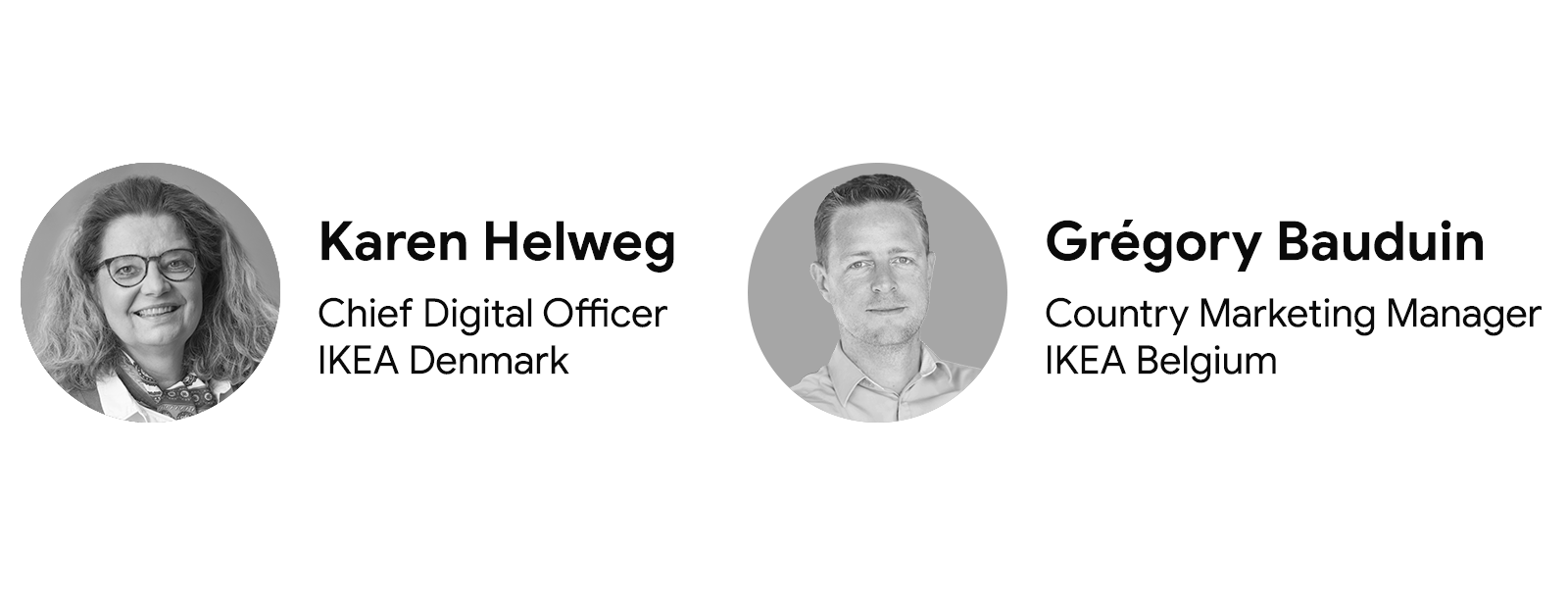
Laying out the market context
Karen 🇩🇰: IKEA is a customer-centric company and we have always prioritised our efforts to understand local customers. In Denmark, we’ve been active for 53 years – and as it’s a digitally mature market, there’s an ongoing appetite for testing and engaging with our omnichannel customers in digital initiatives. For example, we’ve supplied our in-store colleagues with smartphones so that they can use app solutions for more agility.
Nobody is shy to share their opinions in the Danish market, so we get open feedback which we appreciate very much. It’s crucial to listen to your customers and colleagues as it helps you understand what works and where we have some work to do. It shows us the areas we may have overlooked in terms of creating that connection. For example, some of our customers live more than 100km away from their closest store; during COVID we tested a new, affordable delivery service for these customers – and it proved very popular.

Grégory 🇧🇪: When it comes to digital shopping, Belgians were slower to adopt than our Danish friends or Dutch neighbours. They still really like to shop in-store and see the products, which meant we initially didn’t have the same urge as other markets to accelerate our digital maturity.
But that’s changed in recent years. In 2017, we launched our e-commerce channel in French and Flemish, expanding to Luxembourg two years later. The shift to digital during COVID meant Belgians had no choice but to embrace our online channels – we doubled them – and therefore they made a big jump.
Designing for local shoppers
Karen 🇩🇰: Omnichannel shoppers are our most valuable customers as they spend more and shop more often than single channel shoppers. So it’s extremely important that we make the omnichannel experience a premium one.
As today’s customer wants to be in control, we give them the option to manage their relationship with IKEA online, from changing orders to updating personal information. We've also developed solutions to address major pain points in the store, such as a fast-track lane called Shop & Go (Scan & Betal in Danish). It’s a solution that Danish consumers are already familiar with as many supermarkets use it.

Grégory 🇧🇪: Belgian customers love the IKEA experience and the fun day out that comes with visiting our store. And with eight stores spread across the country, Belgians are never more than 30 minutes away from their nearest IKEA. Still, 67% of our local customers go online to research products or check stock availability before coming in. In fact, we have one of the highest research online, purchase offline (ROPO) rates.
But shopping journeys can be different depending on the item someone is looking to buy. Where kitchens require a lot of research and online planning, home accessories can be bought on a whim when shopping in-store. We have to be prepared for all scenarios, and offer solutions to smoothen our customer’s specific journey. For example, customers wanting to buy a kitchen can use an online planning service with one of our co-workers to enhance and prepare their in-store visit – or if they wish, replace it altogether.
Assembling the IKEA business strategy
Karen 🇩🇰: Our mission at IKEA is to create a better everyday life for the many, and our values live in the people at all levels of the organisation and across all channels we operate in.
One of our shopping channels that really shows this – which also happens to be my personal favourite – is the IKEA shoppable app. This sits in the back pocket of our omnichannel customers and creates an enormous amount of intimacy with the customer, which is why I believe it holds the highest potential of any channel we have to connect and create value across the entire shopping journey.
Another focus point is measurability. It’s essential to understand what works, and what doesn’t. It provides accountability, insight, and learnings, and ensures we are a try-and-test organisation. Measurability gives you the, "Aha" moment. It’s when you realise that what you thought was working isn’t – and vice versa. And when you combine it with a sales roadmap, like we have at IKEA, it gives a more holistic view on our results and it’s a motivating part of how we work.

Grégory 🇧🇪: Online and offline channels should reinforce each other – but never compete. We try to maximise on tools that enable a hybrid journey, and ensure that we have information or support available in a way that suits our customers, whether that’s on our website, our shoppable app, or through video calls.
For example, we introduced digital kiosks in our store where omnichannel customers can browse the full IKEA Belgium website. This enables customers to find answers to their questions if they can’t locate a member of staff. Another example in this hybrid journey is our shoppable app, which is a great asset to enable our customers to better prepare their store visit and even avoid queues at the checkout if they wish.
A toolkit for challenges (beyond flatpack)
Karen 🇩🇰: Finding the right balance between centralised operations and what can be done more powerfully on a local level is key. When we talk about the rollout of a new app feature or functionality like Scan & Betal, these are things that need to be developed more centrally. But other improvements require more local involvement and local expertise.
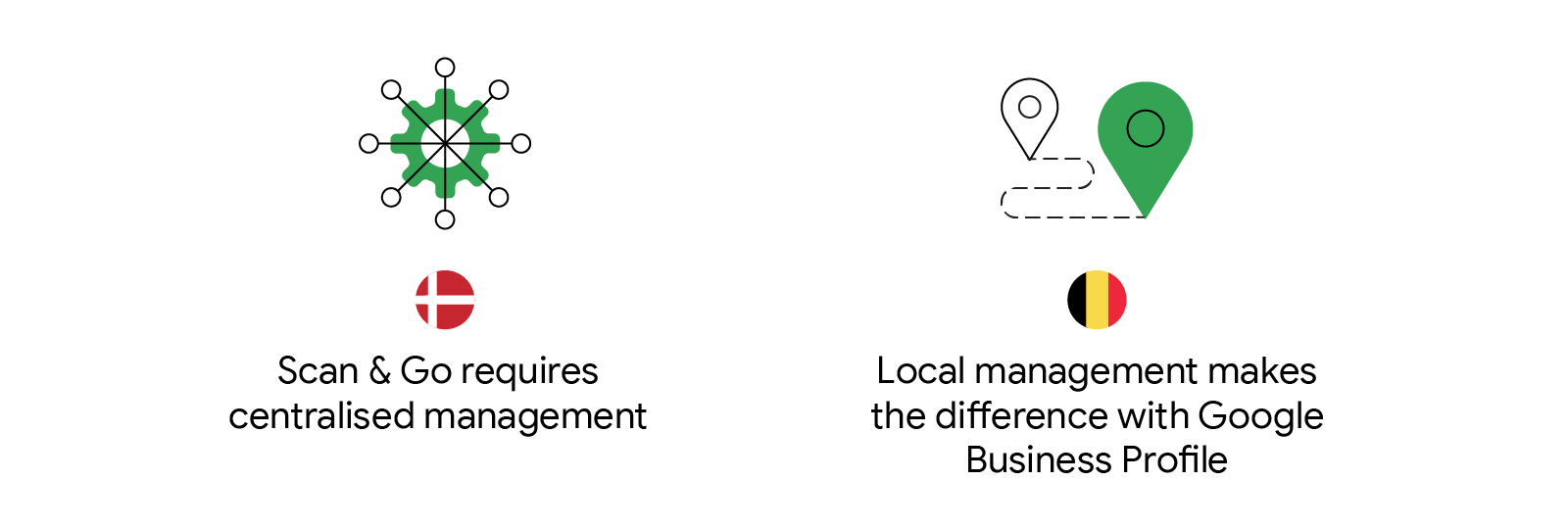
Grégory 🇧🇪: IKEA is a big ship and every time we need to change something in our operations, it’s a big undertaking. But we need to be flexible and adapt our processes. Even in a small country like Belgium, we have eight stores and 4.5K employees. This means we can’t always make changes as quickly as we would like, so it comes down to prioritisation and working with the channels we have available.
One example is Google Business Profile. We made the strategic decision to decentralise how this is managed after we noticed that some local store details were outdated or incorrect, and some customer questions hadn’t been answered quickly enough. Having our store teams manage their own account has made a significant difference – including a high score in Google and Pattern’s Project BOX research.
Opportunities: Omnichannel tech, integration, and sustainability
Karen 🇩🇰: We have many exciting plans for integrating our omnichannel strategy and tech. We opened a planning studio in Copenhagen, and a full city store to follow soon. This allows us to see first-hand what Danish shoppers are really looking for – and what we can do to meet this demand.
We’re building our remote selling team, who can advise customers remotely via web chat or video call. We are also connecting with our customers at home via live shopping, showcasing our ‘life at home' expertise and enabling new technology that allows our customers to visualise how IKEA’s furniture will fit in their home.
And a big focus for us is sustainability and we’re trying to ensure that this is delivered through our omnichannel offering. We’ve had great success with ‘Green Friday’ – so instead of people buying new things on Black Friday, we bought back their old IKEA items and then used our click-and-collect points as a location for collection. It helps ensure circularity in our products and helps use our omnichannel touchpoints for sustainable means.

Grégory 🇧🇪: We are convinced that the future of retail has to be circular. And we are working now on having a fully circular, integrated, and seamless omnichannel experience. For example on order fulfilment through EV, or further developing repair services to have longer product life cycles.
We have a solid 'buy back and resell' service, buying back your current IKEA products to sell them second-hand so you can buy new furniture. These types of projects are also highly prioritised at IKEA to make that shift toward circularity happen.
And radically, we even stopped our iconic paper catalogue a couple of years ago, as we could see consumer needs evolving and we believed we could continue to inspire them through our online channels.
